Agency Project Management: 7 Key Steps To Success
Managing agency projects is a big challenge, especially if you're scaling your operations. We've compiled 8 steps to nail the agency PM workflow!




Managing projects effectively is critical to the success of any creative agency.
It's not just about delivering quality work on time; it's about managing client expectations, streamlining workflows, and ensuring every team member is on the same page.
From graphic design to content marketing to complex 3D animations—the difference between thriving and surviving often lies in the efficiency of your agency’s project management practices.
Let me take you through the 7 steps to your agency’s PM success.

Agency project management is crucial for coordinating various creative tasks and ensuring that client deliverables are met on time and to specification.
You could say, it’s the most important part of running a successful agency.
Unlike project management in other sectors, creative projects require a lot of back and forth with the client due to the iterative nature of design and content development.
Key elements include:
If you can keep a balance of all the pieces above, you’re on the right track.
But of course, you need to be aware of the pitfalls too.
Some of the most common are:
ManyRequests addresses these challenges by providing tools specifically designed for creative agencies, such as customizable client portals, integrated communication systems, and real-time feedback.
A well-structured project management framework is essential for ensuring that all projects are executed effectively and efficiently. There are many schools of thought here, and most agencies end up creating their own blend of traditional methods paired with custom, in-house knowledge.
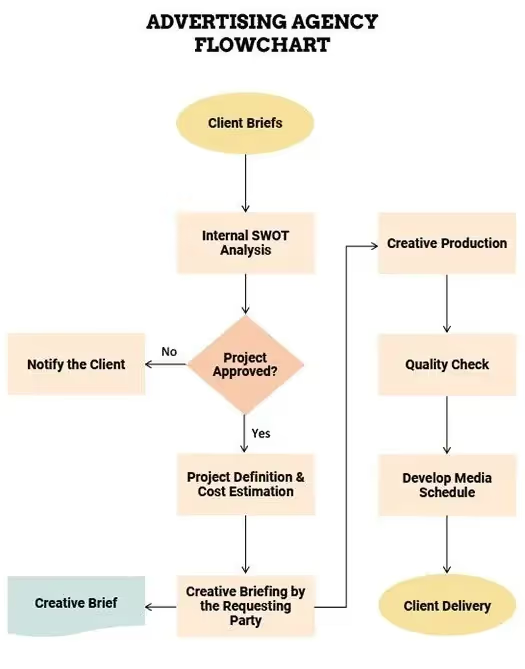
As with any strategy, the 1st thing to do is define objectives.
Start by clearly defining what each project aims to achieve—whether a client’s or internal.
Then, create a detailed project brief that outlines objectives, deliverables, timelines, and budgets.
Documenting in writing is very, very important!
Working on a whim only takes you so far.
This documentation helps all team members understand their roles and the project’s purpose.
Once your brief is complete, you want to:
The biggest mistake agencies make when starting their PM journey is setting everything up beforehand; processes, tools, master plans. This does not work—plain and simple.
People don’t follow rules, they follow processes.
And processes don’t appear out of thin air, they evolve over time.
Unless you’ve verified that a specific “master process” works across teams (they rarely ever do), you have to let the people in your team evolve their own process and grow into it.
Once the team is comfortable with the process (can take anywhere from a few weeks to months depending on the size of the project), you should start investing in automations.
The success of your project management framework largely depends on the cultural alignment within the agency. Inspiring your team members to value transparency, accountability, and continuous improvement can significantly increase the effectiveness of any chosen methodology.
Happy teams = happy customers :)
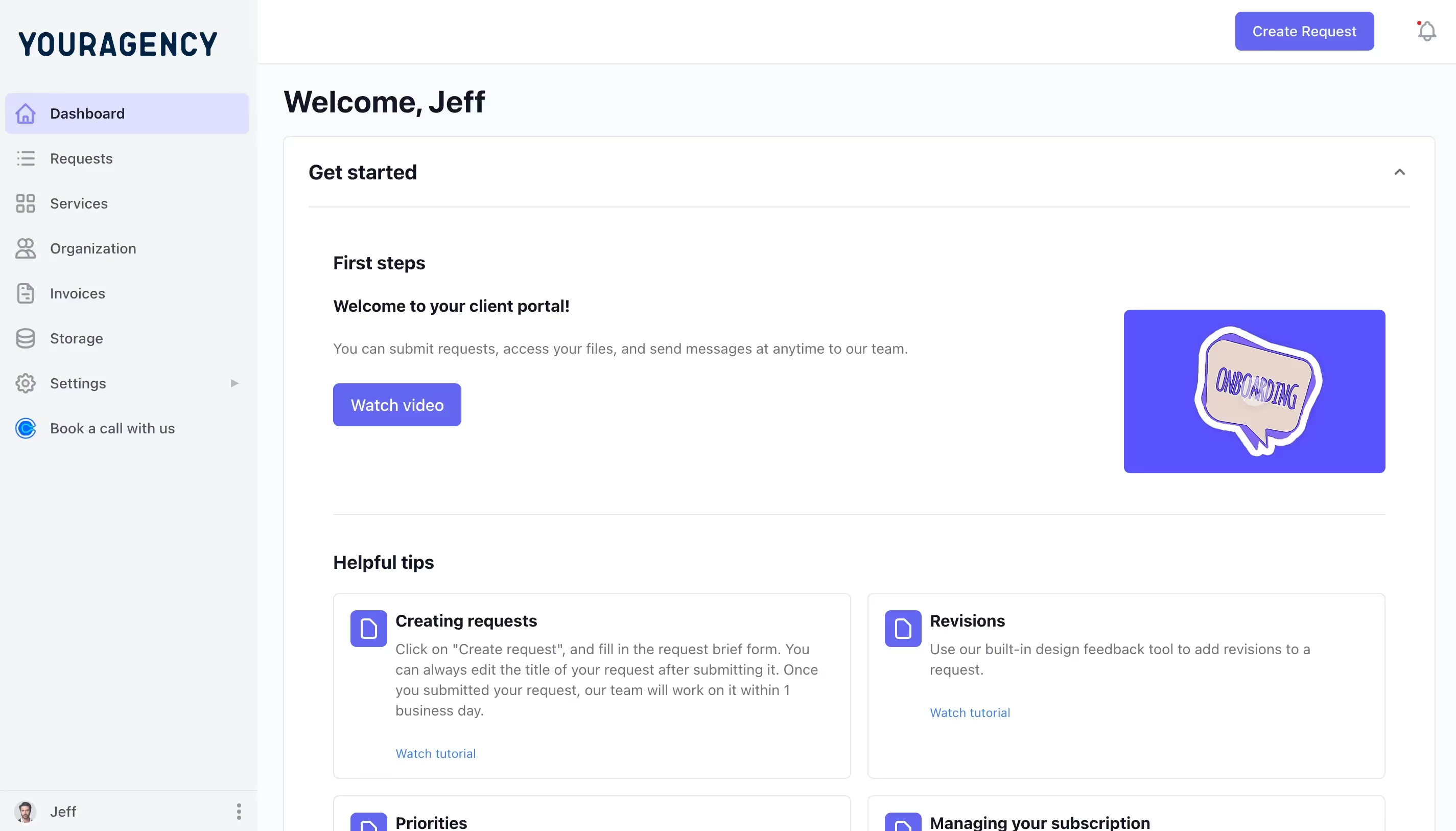
Effective client onboarding is critical as it sets the tone for the client-agency relationship, increasing their long-term satisfaction and making the whole project a lot easier to manage.
Some best practices for client onboarding:
Using agency-specific tools like ManyRequests can give you an extra edge here:
This early investment in client relationship building can lead to more engaged clients and a much smoother project execution. The last thing you want is to start on a bad note!
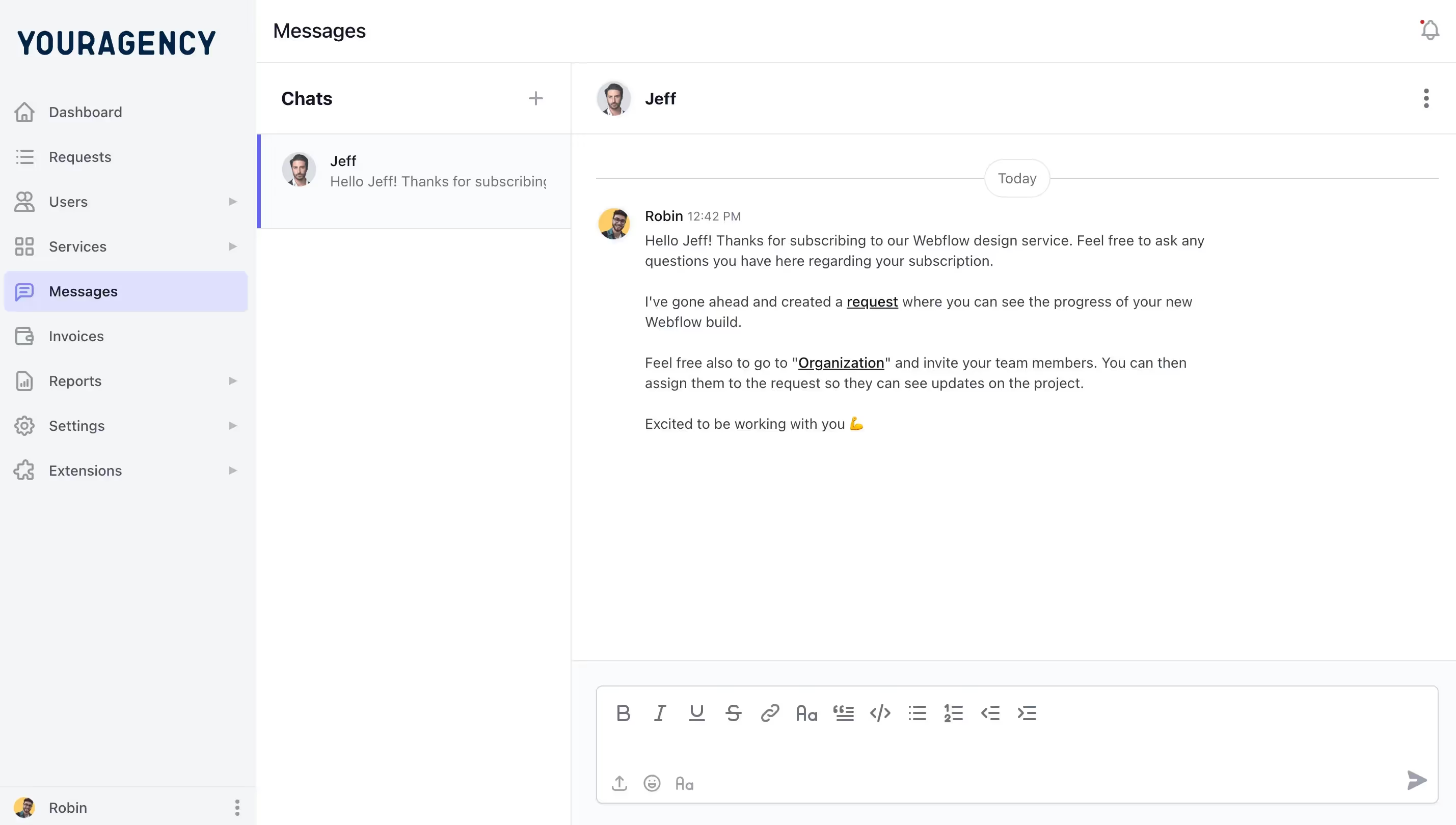
Effective communication is foundational to successful project management, especially in a creative agency where projects are iterative and require frequent updates or feedback.
Give regular updates to customers without over communicating.
(i.e. Don’t text them every day unless you have something of substance to share)
Also, take time to write messages manually where possible; unlike what most AI automation companies will tell you, customers don’t like to receive messages that feel like they’re written by bots.
One way to speed up communication is to keep everything in one place:
This is not easy to do via email due its “threaded” nature.
Messages and files get lost in a sea of text.
Instead, use software like ManyRequests to keep everything stored in the context of the customer’s project and their organization—helping you and your customers retrieve important information quickly.
By standardizing your communication process and giving regular updates (weekly should work well for most projects), your agency can mitigate the risk of project delays and misunderstandings.
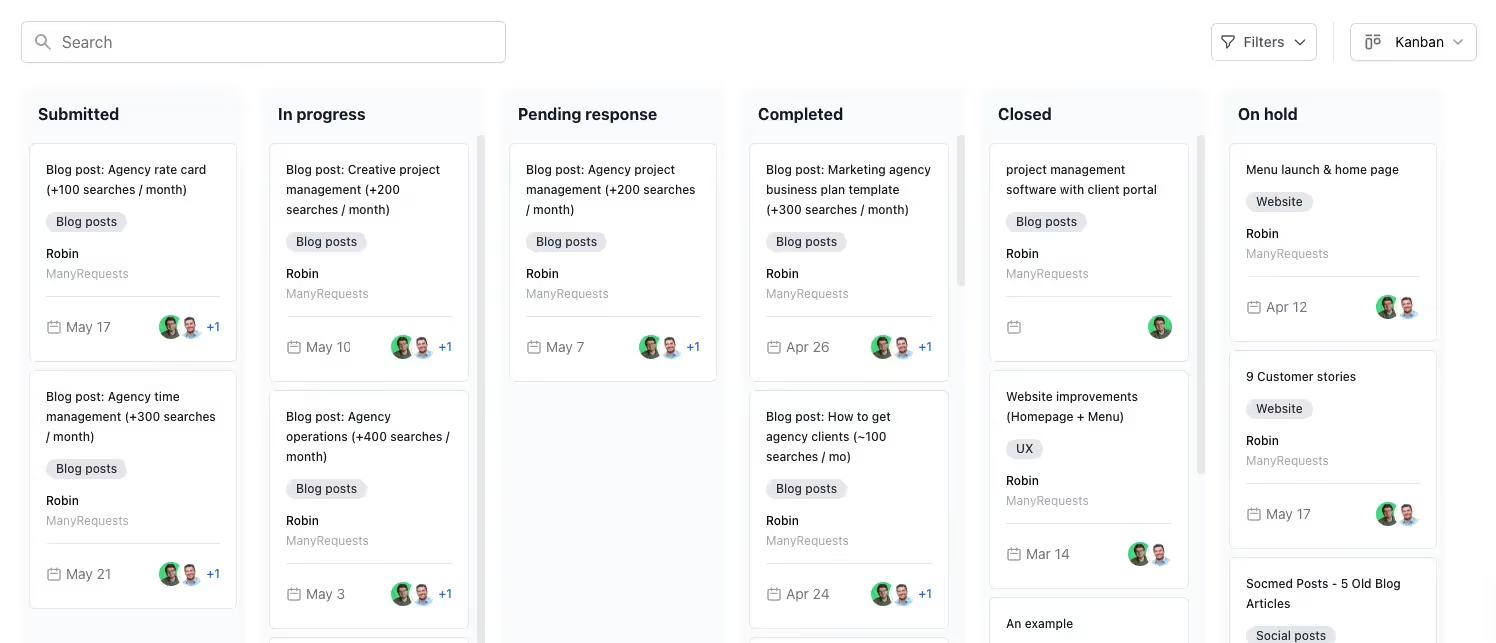
Project management platforms like ManyRequests are designed to simplify the entire delivery process from start to completion. To do that, they offer tools that fit naturally into a creative agency’s workflows.
3 of the bigger operational areas for an agency are:
And here’s an important (but sometimes hard) truth…
» You cannot scale an agency without all 3 components above in place.
You can certainly make it work for yourself and some other coworkers, but you can’t take it to 100s of customers and dozens of employees. If that’s your goal, start investing in all 3 today.
Some things to look into are:
Although software is powerful, effective project management in your agency requires a holistic approach to leadership and team dynamics. Make sure you have that down 1st—use software as an accelerator.
.avif)
In creative projects, design feedback is a critical phase that often requires several iterations to get right. The traditional back-and-forth via email or call / meeting is super inefficient in this area.
In 2024, you must invest in design tools like Figma for prototyping, design annotation for feedback (i.e. marking a live website, graphic, or video directly with comments) and cloud storage for delivery.
Revisions are a big part of design work after all.
Some best practices in this area:
While technology plays a critical role in facilitating design feedback, the human element of interpreting and acting on this feedback is equally important. Agencies like yours should focus on developing a deep understanding of their clients' needs and keep quality in check to build long-lasting relationships.
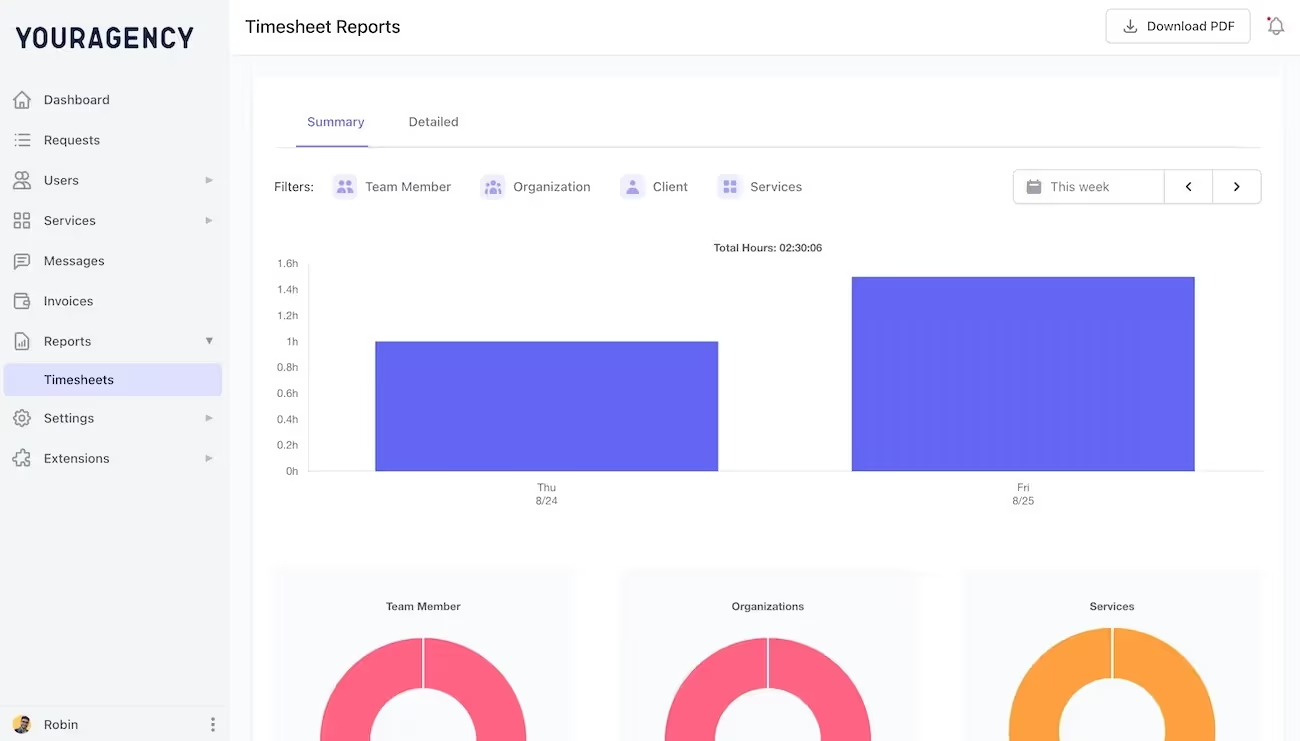
Effective use of analytics and reporting is crucial for assessing project performance, optimizing processes, and demonstrating results to clients. Some of the data to report on is: time spent on projects, productivity rates, number of customer complaints, profitability by service category, and other metrics.
You can report on these either manually (takes forever) or with automated tools.
Some real-world examples of how to use this data:
Analytics and reporting go beyond mere measurement of project metrics; they are essential for strategic planning and forecasting. Make sure you start gathering data early in the process.
Effective project management is the backbone of any successful creative agency. With the right tools and strategies in place, agencies like yours can achieve remarkable efficiency and client satisfaction.
ManyRequests addresses the challenges faced specifically by creative agencies, helping you manage projects, communicate with clients, and track progress in a streamlined and integrated manner.
Try it out for free today with a 14-day trial.
Agency project management refers to the discipline of organizing, planning, and executing projects within a creative, marketing, or advertising agency. It involves overseeing the workflow and delivery of projects that typically involve creative production like web development, branding, graphic design, or content creation. The goal is to deliver these projects on time, within budget, and according to client specifications.
In a creative agency, a project manager's role is pivotal. They act as the bridge between the agency's creative team and its clients, ensuring smooth communication and workflow throughout the duration of a project. Responsibilities include defining project scope, planning timelines, allocating resources, monitoring progress, and adjusting plans as needed to address any issues or changes.
Agency resource planning involves the strategic allocation and management of an agency's resources—staff, time, budget, and tools—to ensure optimal efficiency and productivity. It includes scheduling which team members work on specific projects based on their skills, availability, and the project needs, as well as managing the financial resources to maximize profitability.
The structure of agency management typically includes several layers, starting with senior management (such as CEOs or managing directors) who define the agency’s strategic direction. Below them, there are department heads or directors for various functional areas such as creative, marketing, sales, and finance. These managers oversee teams specializing in specific services like design, copywriting, SEO, or client relations. Project managers or team leads operate within these departments, directly managing the day-to-day execution of projects and coordinating between the team and clients.